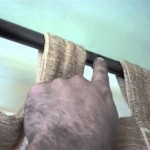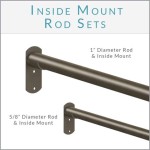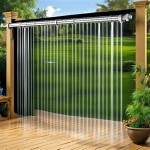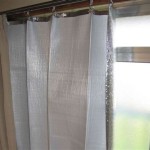The Versatile Steamer: A Garment and Curtain Care Essential
Steamers have emerged as a popular alternative to traditional ironing for removing wrinkles from garments and fabrics. Their versatility extends beyond clothing, proving particularly useful for refreshing and deodorizing curtains. This article will explore the workings of steamers, their benefits, and key considerations for selecting and using them effectively for both clothing and curtain care.
A steamer operates by heating water to produce steam, which is then expelled through a nozzle or head. This steam penetrates the fibers of the fabric, relaxing them and allowing wrinkles to release. Unlike ironing, which uses direct heat and pressure, steaming relies on the moisture and heat of the steam to gently smooth the material.
Understanding the Mechanics of Steam
The effectiveness of steam lies in its ability to temporarily disrupt the hydrogen bonds within the fabric's fibers. These bonds are responsible for holding the fabric in its wrinkled state. When steam is applied, the heat and moisture cause these bonds to loosen and the fibers to swell. As the fabric cools and dries, the fibers naturally return to a smoother, less wrinkled state. This process is gentler than ironing, as it avoids the direct application of high heat and pressure that can potentially damage delicate fabrics.
The process also helps to remove odors. The heat of the steam breaks down the molecules that cause unpleasant smells, leaving the fabric fresher. This is particularly beneficial for curtains that may have absorbed household odors over time.
There are two primary types of steamers: handheld steamers and standing or garment steamers. Handheld steamers are compact and portable, making them suitable for quick touch-ups and travel. Standing steamers, on the other hand, have a larger water tank and a hanging rack, allowing for steaming larger items like dresses, suits, and curtains more easily.
The choice between a handheld and standing steamer depends on individual needs and usage frequency. For occasional use and travel, a handheld steamer may suffice. However, for regular use and larger items, a standing steamer provides greater convenience and efficiency.
Steaming Curtains: A Room Refreshing Technique
Curtains, due to their size and location, are often difficult to iron. Removing and re-hanging them for ironing can be a cumbersome process. Steaming offers a convenient alternative for refreshing and de-wrinkling curtains while they are still hanging. This eliminates the need for removal and allows for quick and easy maintenance.
Before steaming curtains, it's essential to identify the fabric type. Most curtains are made from materials like cotton, linen, polyester, or blends. Delicate fabrics like silk or velvet require extra care and a lower steam setting to prevent damage. Always test the steamer on an inconspicuous area of the curtain first to ensure it doesn't cause discoloration or shrinkage.
To steam curtains effectively, start at the top and work your way down, holding the steamer nozzle a few inches away from the fabric. Move the nozzle in a slow, steady motion, allowing the steam to penetrate the fibers. Pay particular attention to any areas with visible wrinkles or creases. For heavier fabrics, multiple passes may be necessary. Ensure adequate ventilation in the room while steaming to prevent moisture buildup.
Steaming not only removes wrinkles but also helps to eliminate dust, allergens, and odors that may have accumulated on the curtains over time. This can contribute to a cleaner and fresher indoor environment. Furthermore, steaming can help to restore the fabric's natural luster, making the curtains appear more vibrant and new.
The frequency of steaming curtains depends on factors such as exposure to dust, sunlight, and household activities. In general, steaming every few months can help to maintain their appearance and cleanliness.
Steaming Clothes: An Alternative to Ironing
Steaming is a gentler alternative to ironing for many types of clothing, particularly delicate fabrics like silk, chiffon, and lace. It is also effective for removing wrinkles from garments with embellishments or intricate details that are difficult to iron. The absence of direct pressure minimizes the risk of damage or distortion.
When steaming clothes, hang the garment on a sturdy hanger in a well-ventilated area. Use a hanger that allows the garment to hang freely without bunching or creasing. Before steaming, check the garment's care label for any specific instructions regarding steaming. Some fabrics may not be suitable for steaming or may require a specific steam setting.
Start steaming at the top of the garment and work your way down, holding the steamer nozzle a few inches away from the fabric. Use a slow, steady motion, allowing the steam to penetrate the fibers. For stubborn wrinkles, gently pull the fabric taut while steaming. Be careful not to saturate the fabric with steam, as this can cause water spots or shrinkage.
After steaming, allow the garment to air dry completely before wearing or storing it. This will help to prevent wrinkles from re-forming. For best results, hang the garment in a well-ventilated area until it is completely dry.
Steaming can also be used to freshen up clothes that have been stored for a long time. The steam helps to remove musty odors and restore the fabric's natural luster. It is also an effective way to remove wrinkles from clothes that have been packed in a suitcase for travel.
While steaming is generally safe for most fabrics, it is not recommended for leather or suede, as the moisture can damage these materials. Always test the steamer on an inconspicuous area of the garment first to ensure it doesn't cause any adverse effects.
Selecting the Right Steamer: Key Considerations
Choosing the right steamer requires careful consideration of several factors, including the type of steamer, water tank capacity, steam output, heat-up time, and safety features. The type of steamer, whether handheld or standing, depends on individual needs and usage frequency, as previously discussed.
Water tank capacity determines how long the steamer can operate continuously before needing to be refilled. A larger water tank is ideal for steaming multiple garments or curtains at once. Steam output, measured in grams per minute (g/min), indicates the amount of steam produced by the steamer. A higher steam output generally results in faster and more effective wrinkle removal.
Heat-up time refers to how long it takes for the steamer to heat up and produce steam. A faster heat-up time is convenient for quick touch-ups. Safety features, such as automatic shut-off and overheat protection, are essential for preventing accidents and ensuring safe operation.
Additional features to consider include adjustable steam settings, which allow for customizing the steam output to suit different fabric types; attachments, such as fabric brushes and upholstery tools, which enhance the steamer's versatility; and a retractable cord, which makes storage easier.
Price is also a factor to consider, but it's important to balance cost with quality and features. Investing in a higher-quality steamer may result in better performance and longer lifespan. Reading online reviews and consulting with other users can provide valuable insights into the performance and reliability of different steamer models.
Regular maintenance is crucial for keeping the steamer in good working condition. This includes descaling the steamer regularly to remove mineral deposits that can clog the steam vents and reduce steam output. Follow the manufacturer's instructions for descaling, using a descaling solution or a mixture of vinegar and water.
Proper storage is also important. After each use, empty the water tank completely and allow the steamer to cool down before storing it. Store the steamer in a dry, cool place, away from direct sunlight and extreme temperatures.

Choosing The Right Steamer For Curtain Cleaning Fortador

Upright Garment Steamer Coopers Of Stortford

Hamilton Beach Handheld Garment Steamer For Clothes Bedding Curtains Traveling 1000 W Steam Pump

J 40000ds Steamer For Curtains

The 3 Best Clothing Steamers Of 2025 Reviews By Wirecutter

Tefal Access Steam Force Handheld Garment Steamer Dt8280

The 3 Best Clothing Steamers Of 2025 Reviews By Wirecutter

Choosing Using And Decalcifying Your Clothes Steamer Made Simple

8 Best Clothes Steamers 2025 The Strategist

Steaming Curtains Clothes Steamers








